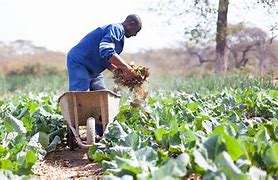President Nana Addo Dankwa Akufo-Addo has indicated that the second phase of the Planting for Food and Jobs (PFJ) program will transform Ghana’s agricultural sector and achieve food security.
Transitioning away from a policy of subsidies, the government plans to allocate resources to establish an input credit system that is inclusive of all contributors within the agricultural value chain.
According to him, the program’s structure prioritizes commercial agriculture, aiming to positively impact stakeholders across the entire spectrum, including those involved in production, processing, distribution, and marketing.
“We anticipate that, by the end of the five-year implementation period, Ghana will have achieved enhanced food security, and established a strong comparative advantage in the production of diverse cash and food crops and poultry products.
“Additionally, we aim to leverage competitively the opportunities presented by the Africa Continental Free Trade Agreement (AfCFTA).”
Nana Addo Dankwa Akufo-Addo
Aimed at leveraging the achievements of phase one, the second phase of the initiative entails a comprehensive five-year blueprint designed to revolutionize Ghana’s agricultural landscape. Central to this strategy is the emphasis on modernization, achieved through the advancement of specific commodity value chains and the active engagement of the private sector.
President Akufo-Addo indicated that the second phase, by its inherent design, “takes a holistic view and places greater emphasis on value chain approaches by focusing on strengthening linkages between actors along eleven selected agricultural commodity value chains broadly categorized into grains, roots and tuber, vegetables and poultry.”

According to the President, this comprehensive approach will stimulate economic activities within the sector, generate employment, support industrialization, boost exports, increase incomes, foster rural development, and propel overall economic growth.
Furthermore, Phase Two of the Programme also seeks to improve service delivery to maximize impact, and substitutes direct input subsidy with smart agricultural financial support in the form of comprehensive input credit, with provision for in-kind payment.
Furthermore, the President revealed that essential components of the upcoming phase encompass an input credit mechanism, ensuring that farmers gain access to crucial resources like seeds, fertilizers, pesticides, and other vital support services to enhance productivity and yield. Additionally, the plan incorporates the establishment of storage infrastructure and logistic hubs, aimed at improving storage capabilities and enhancing the distribution of agricultural produce, ultimately minimizing post-harvest losses.
Minority Disappointed In the Achievements Of Phase One
Planting for Food and Jobs (PFJ) Campaign was launched by President Nana Addo Dankwa Akufo-Addo in April 2017.

The government spent an estimated GHS 2.9 billion so far on this flagship program since its inception. The minority therefore accused the government of not being able to translate the huge sums spent, it into growth in the sector.
“Having inherited an agricultural sector with a growth rate of 2.7 percent in 2016, and after expending millions of cedis on PFJ for six years, agriculture growth stands at a disastrous 0.7 percent.”
Dr. Godfred Seidu Jasaw, Deputy Ranking Member, Committee on Food, Agriculture, and Cocoa Affairs
Planting for Food and Jobs (PFJ) initiative has been meticulously crafted to address particular requirements, intending to foster a comprehensive shift within Ghana’s agricultural sector. During its initial phase, the policy mobilized the entire populace towards cultivating cereal crops and vegetables in open areas, encompassing not only public but also private entities such as breweries, food processing companies, educational institutions, and correctional facilities.
The primary aim was to enhance domestic food production, diminish overreliance on imported food products, create a surplus for export, and generate employment opportunities for the Ghanaian populace.
READ ALSO: Residents Of Secondi-Takoradi Take To The Streets





















